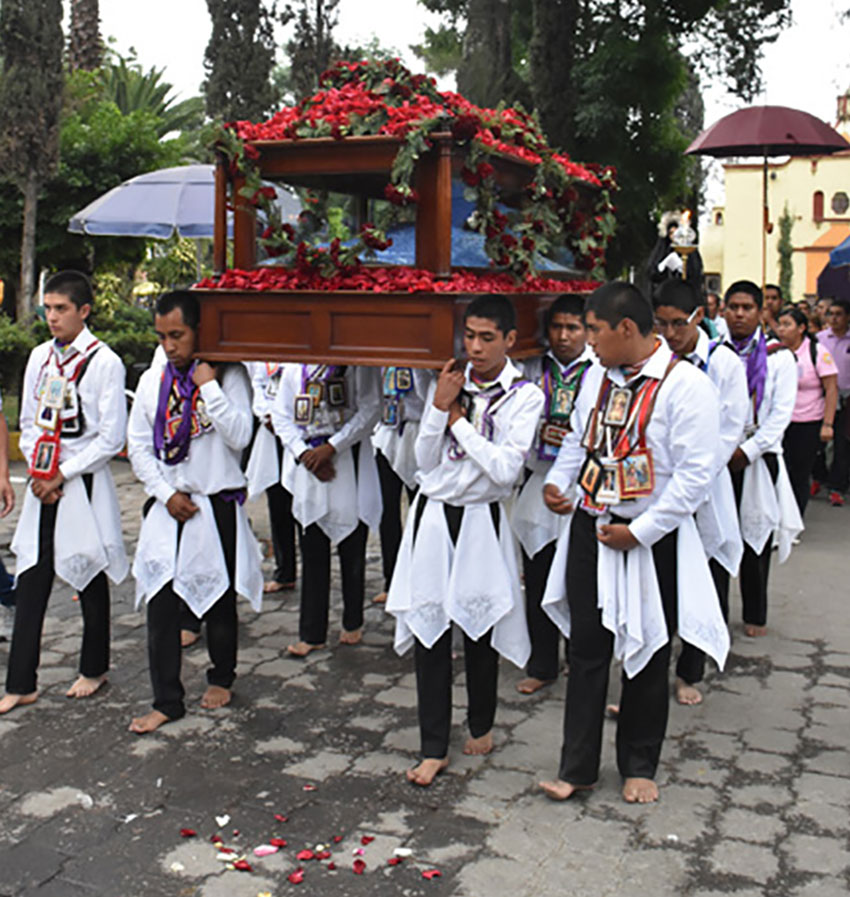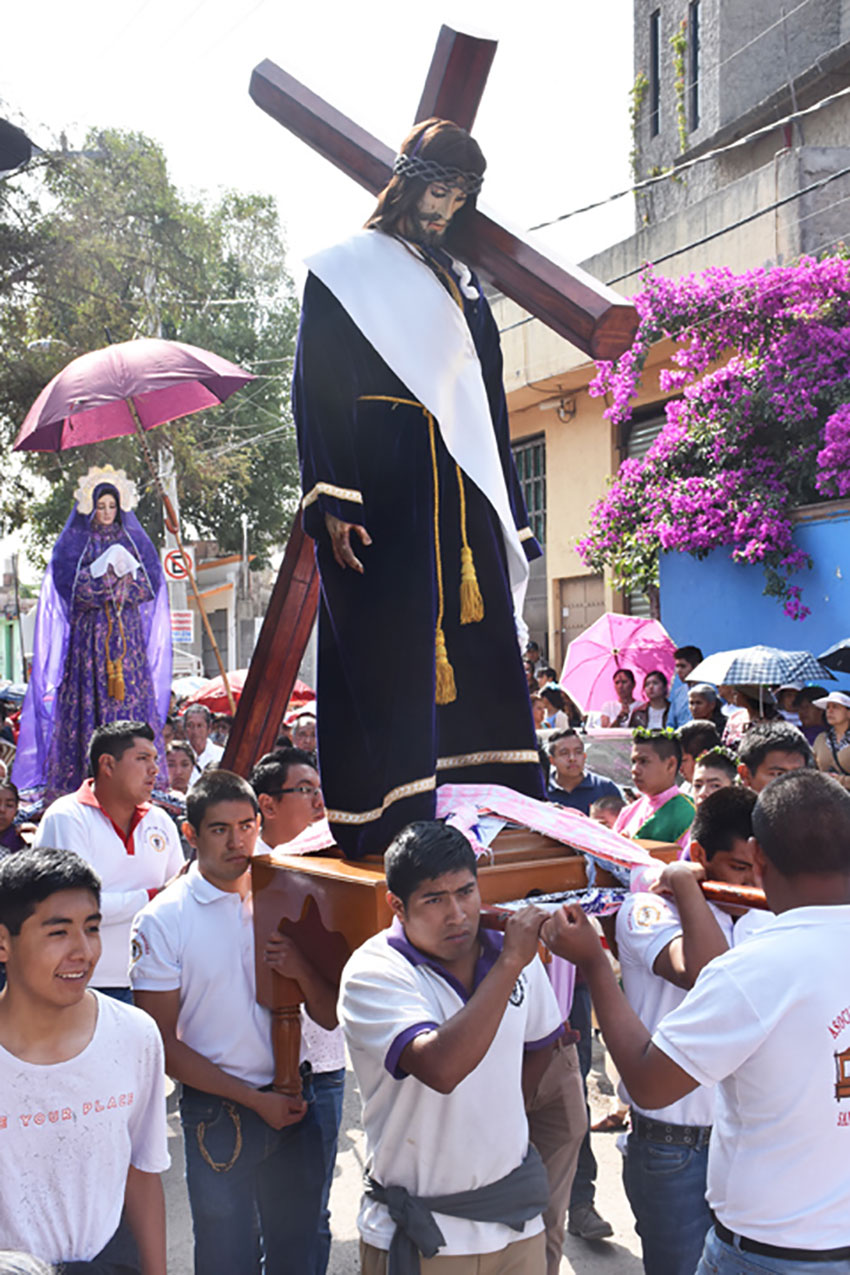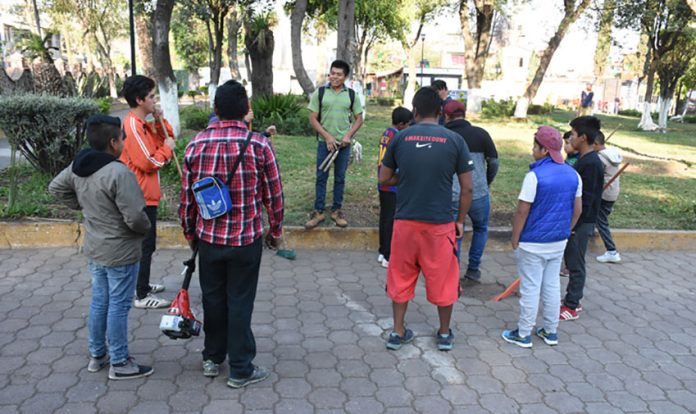Los Varones is a group of 14 young men in San Gregorio Atlapulco, Mexico City, who dedicate a year or more to serving the Catholic Church, a group that is the only one of its kind in Mexico, and perhaps the world.
The young men spend months in rigorous physical and spiritual training and, during Holy Week, endure periods of fasting and silence. “It is not easy,” admitted Ricardo Castro, a member for two years, “but one does it with faith.”
There’s very little written about their history, but there are snippets and some oral history that allow them to be better understood.
When Franciscan friars arrived in San Gregorio in 1555, the land had already been occupied for thousands of years. There’s a Neolithic site in an ejido known as El Japón that’s 4,000 years old (they were hunter-gatherers) and ruins in the hills that are at least 2,000 years old.
The hills were occupied by two groups of Mexicas and the lowland areas known as the chinampas were occupied by two groups of Alcohuas. They were Nahua, and had a warrior culture.

Los Varones got their name from those Franciscan friars, an order that was founded by Saint Francis of Assisi. He was known as El Santo Varón, and the order is often referred to as Los Santos Varones.
Los Varones may be translated as “The Young Men” but in this case it has a deeper connotation of someone who is chaste and serious.
“Franciscans arrived in [San Gregorio in] the 16th century and they were really the first Varones,” said Arturo Galicia Carrasco who was a member of the group several years ago. “Probably in the early 17th century, they started using young men from the pueblo.”
Although firmly rooted in the Catholic religion, the group contains elements that can also be traced to indigenous groups that occupied the region in pr-Hispanic times (this mixing of Catholic and indigenous beliefs is referred to as Popular Religion).
The training Los Varones undergo today is in some ways similar to the military training undertaken by Mexica warriors in a school for children of the nobility. Los Varones need the training because during Holy Week they carry large statues through the pueblo for hours.
“We prepare for that by carrying a heavy table,” said Octavio Flores, a 15-year-old who has been in Los Varones for two years. “We run, do push-ups and pull-ups, we walk without shoes. Sometimes we put another person on our back and climb stairs.”

Los Varones have a number of responsibilities to perform during the year. They maintain the gardens in front of the church, clean various statues and also clean some of the pueblo’s chapels. It’s a sizable time commitment.
“We are together Saturdays and Sundays for the whole year,” said Alberto Casas Garcia, the group’s president. “It is like we are family.” Members also spend more time in prayer and, especially during the period between Ash Wednesday and Easter Sunday — the cuaresma — attend more masses.
All members must be single. “If I want to marry,” said Castro, “I must leave the group.”
New members, called aspirantes, may ask to join Los Varones or, if someone is noticed to be especially pious, may be approached by someone in the group. At times during their training or while doing work with Los Varones, aspirantes must walk barefoot.
“That can be difficult,” admitted Eduardo Huerta Galicia, “But it prepares us … it is to purify oneself.” Going barefoot may harken back to the training of Mexica warriors and also to Franciscan friars, who often went barefoot to show their humility.
Given the commitment and the rigors of the training it’s a little surprising, especially these days, that there are still young men who want to be members of Los Varones. And even after serving for a year they want to continue.
Castro has been a member for two years now and doesn’t plan on leaving anytime soon. “They are my brothers,” he said. “It is not only for Easter Week, we are together all year … The group is now part of me. I know one day I will leave but I do not want to. The most important reason we do this is to be close to God. That is the most beautiful thing.”
Joseph Sorrentino is a regular contributor to Mexico News Daily. He writes from his home in San Gregorio.
